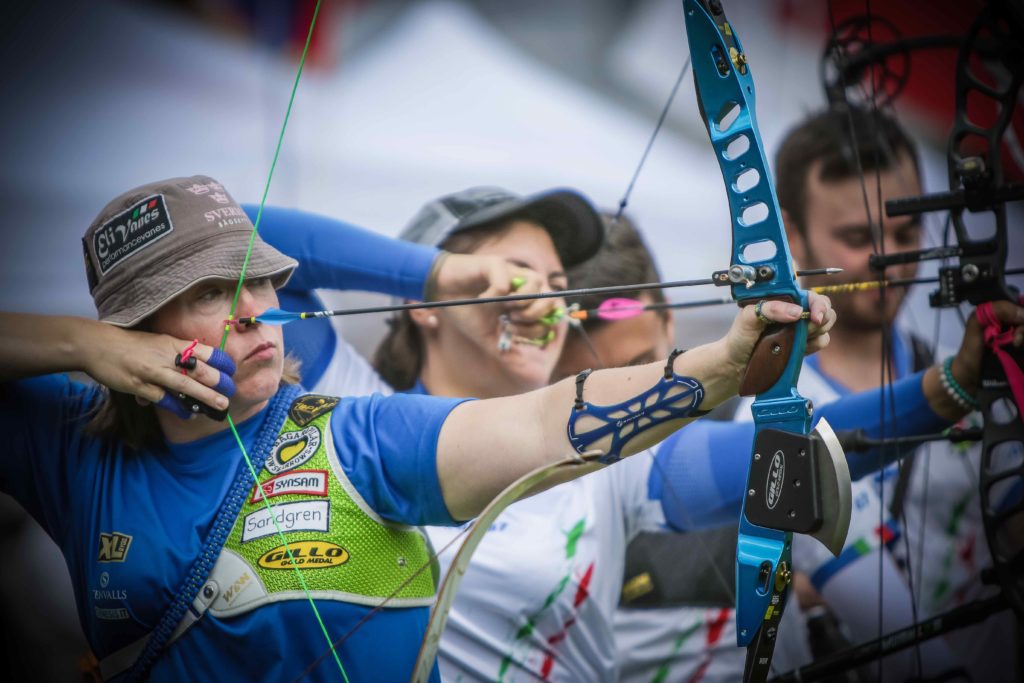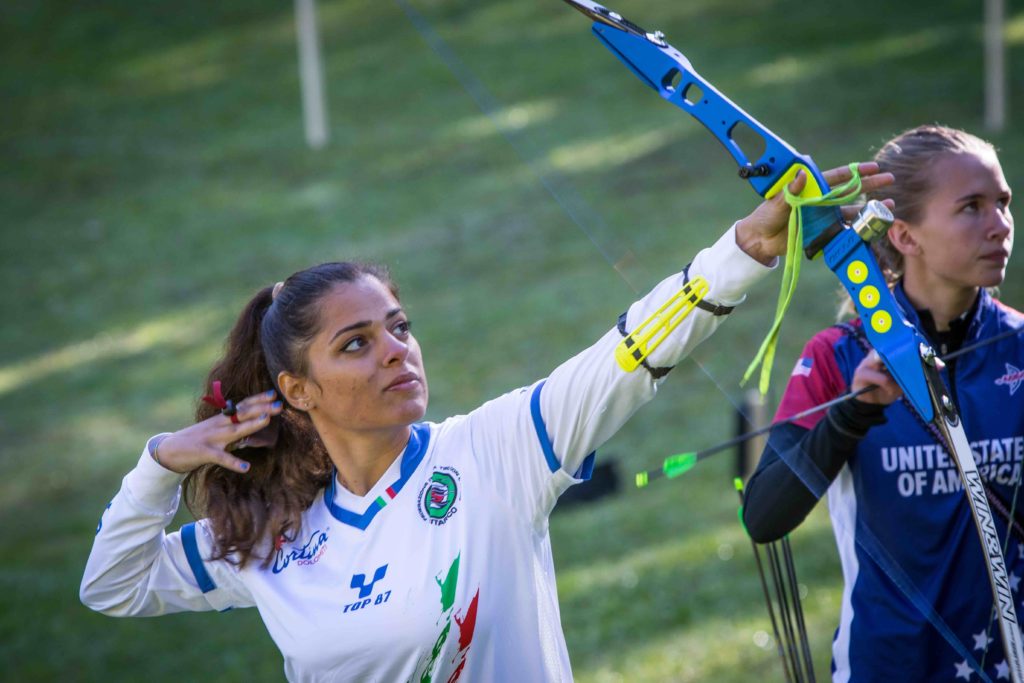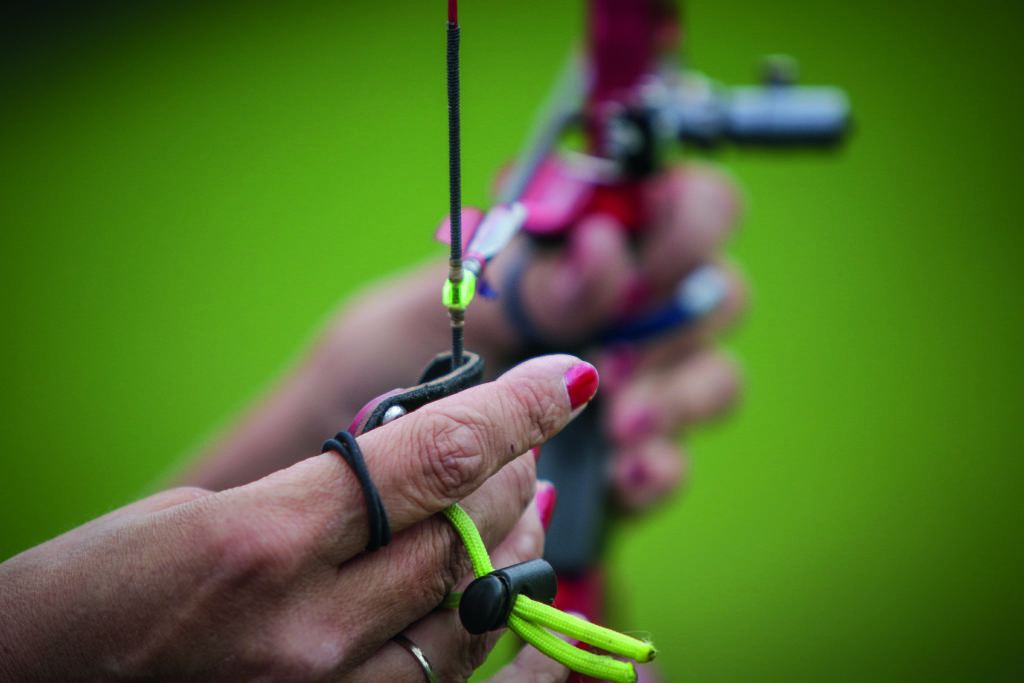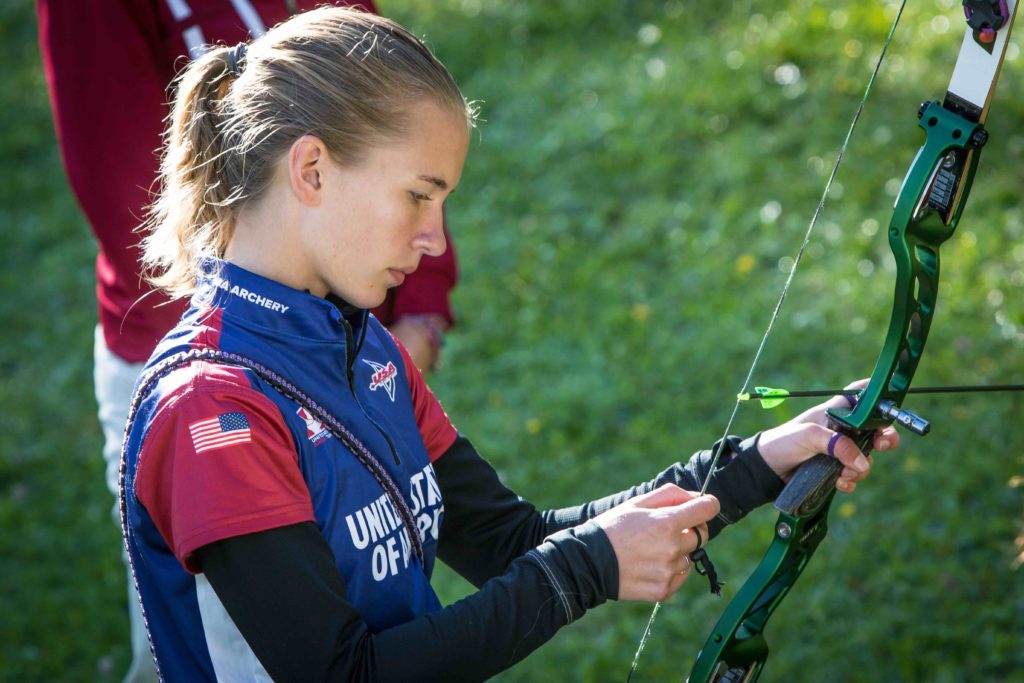An overview by Victoria Williams

There is always a lot more to barebow archery than meets the eye. To score well at field archery with a barebow it’s not, as some might say, a matter of pointing in the right direction and hoping for the best.
The World Archery definition of the barebow classification includes no draw check or clicker, no sight and no stabilisation rods. (Some other organisations, especially in the USA, do things a little differently).
Everything that can be used to assist the archer in making a good shot must fit through a 12cm ring when attached to the riser. To score well, both the bow set up and the archer must be optimally prepared.
As with almost any form of archery, time spent working solely on form is time well-invested. Without the assistive aspects of an olympic recurve or compound bow the archer is very much reliant on their own ability to shoot a good shot. With barebow, there’s nowhere to hide, but there is a lot you can do to ensure you get the most out of yourself and your bow.
What does it take to be a good barebow field archer?

You will need to shoot well over all distances, therefore it’s a good idea to tune your bow to the middle of your distance range. A rough bow tune would involve a neutral tiller, using the manufacturers recommended bracing height, making sure the limbs are in alignment and setting the centre shot just left of centre for a right-handed archer.
The nocking point will need to be slightly higher than an Olympic recurve set up to counteract string walking. Choose your arrow spine according to the manufacturer’s recommendation.
Once you are used to how the bow shoots and what it does at each distance, then you will need to fine tune it by adjusting the centre shot, by adding or decreasing twists to the sting, by adjusting the pressure button and adjusting the nocking point height to assist with any discrepancies in your shot.
Barebow shooters will need to spend even more time becoming aware of the finer details of tuning than most archers.
Working the distances

Once you’ve got your well-tuned set up, your sight marks and you know how to judge distance (which is an article in itself) you’ll be ready to tackle uneven terrain.
On the slopes you will need to be able to keep your T-form and accurate draw by bending from the waist, rather than raising or lowering your bow arm.
It’s worth working specifically on this technique. Additionally, due to uneven ground you may need to use a wider or narrower stance to form a solid base to shoot from.
This takes practice and you may need to work on any physical restrictions or strength issues to ensure you can do this. Core strength and shoulder girdle mobility are a must.
You will need to develop your own system for shooting the different distances. Stringwalking or crawls will allow you to aim at the gold at each distance.
You’ll need to spend time working out where on the string to put your fingers for each different distance and you can make a mark on your finger tab for each distance.
Start by doing this on a flat range initially and then find some slopes to practise on in order to work how much of an adjustment you’ll need to make to your basic sight marks to shoot uphill or downhill distances.
Some archers prefer to use a gap system whereby they will shoot without moving up or down the string but will aim higher or lower on the target. Whichever system you decide to use, you’ll need to be sure of it in order to be confident out on the course.
A World Archery two-day field round includes both marked and unmarked distances and so you will need to be able to recognise the different face sizes and be able to effectively gauge the distance of unmarked targets.
Many archers use something on their bow, perhaps the pressure button or the width of the riser, to compare against the target at full draw to determine how far away the target is. Make sure you look at the target to see if it is square on to you.
If it’s not, it will alter how much of the target you see when you gauge and consequently give you a false reading. To help you identify the target face size, and therefore the distance range, compare it with the size of the boss. Be aware though, some courses will use different sized bosses to make target and boss comparison more difficult.
Also, compare the boss size with people who may be scoring at the target when you approach. As you are walking around make a mental note of any different sizes you see.
The challenge

You may have to deal with adverse weather. Here in the UK we often get all four seasons in one day so being prepared for this is always good. Sturdy waterproof boots are a must, along with layers of clothing which can be added or shed according to the temperature.
You’ll be out on the course for a few hours without stopping so you’ll need to think about food and water too. A backpack to carry it all in which also doubles up as a stool to sit on is ideal.
Field archery is a challenge, it’s a step beyond target archery but it’s great fun and great exercise. For barebow archers there’s an opportunity to progress to international level in both field and 3D, so there is a definite pathway from beginner to elite for everyone.
Most field clubs hold regular beginner’s courses and support archers to experience and get involved in field archery during the off season, before going out to compete.
With the right support and guidance, developing the skills needed to enjoy barebow field archery is an adventure in itself. If you don’t know where to start, find yourself a field club and you’ll definitely find people willing to help you. Indeed, that’s the real magic.

